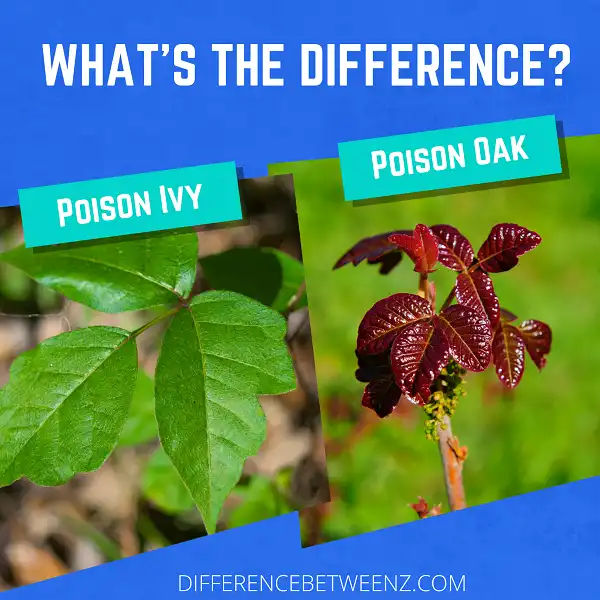While there are many different types of poison ivy, all pose a serious risk to people and pets if contact is made. It’s important to be able to identify poison ivy so you can avoid it, and also so you can treat any exposure quickly. In this blog post, we’ll take a look at the differences between poison ivy and poison oak, both of which are common in North America. We’ll also discuss how to treat any exposure to these plants.
What is Poison Ivy?
Poison ivy is a plant that grows in much of North America. It is most commonly found in wooded areas, but it can also grow in fields and along roadsides. The plant has three shiny green leaves that are arranged in a cluster. Poison ivy produces small white flowers and bright red berries. The leaves, stems, and berries of poison ivy contain a substance called urushiol. This substance can cause an itchy rash in people who come in contact with it. Poison ivy is often found growing alongside other plants, so it is important to be able to identify it. If you think you may have come into contact with poison ivy, wash the affected area with soap and water as soon as possible. You can also use a topical cream or lotion to relieve the itchiness. If the rash is severe, you may need to see a doctor.
What is Poison Oak?
Poison Oak is a common name for a plant that can be found in many parts of the world. The Poison Oak plant contains a chemical called urushiol, which can cause severe skin irritation in humans. Poison Oak typically grows as a shrub or vine, and its leaves are divided into three leaflets. The leaflets are usually bright green in color, and they have a glossy surface. Poison Oak can be found in both wooded areas and open fields. It is important to note that Poison Oak plants can release their toxins even when they are not growing.
If Poison Oak leaves are burned, the urushiol can be released into the air and inhaled, causing respiratory problems. Poison Oak plants can also cause problems for animals if they eat the leaves or stems. If you suspect that you have come into contact with Poison Oak, it is important to wash the area with soap and water as soon as possible. You should also avoid touching your eyes or mouth, as this can cause the poison to enter your bloodstream. If you develop a rash, you may need to see a doctor. Poison Oak rashes can be extremely itchy and uncomfortable, but they are usually not serious.
Difference between Poison Ivy and Poison Oak
Poison ivy and poison oak are both plants that can cause allergic reactions in humans. Poison ivy is a vine that has three leaves, while poison oak is a shrub that has either three leaves or five leaves. Both plants contain a substance called urushiol, which can cause an itchy rash, redness, and swelling. Poison ivy is found throughout the United States, while poison oak is found in the western United States. Poison ivy typically grows in woods and fields, while poison oak typically grows in areas with a lot of trees. If you come into contact with either plant, it is important to wash the area with soap and water as soon as possible.
Conclusion
The main difference between poison ivy and poison oak is the appearance of their leaves. Poison ivy has three leaflets per leaf, while poison oak has seven leaflets per leaf. In terms of treatment, both plants’ oils can cause a rash, but the reaction is usually more severe with poison oak. If you think you may have come into contact with either plant, it’s important to seek medical help right away.


